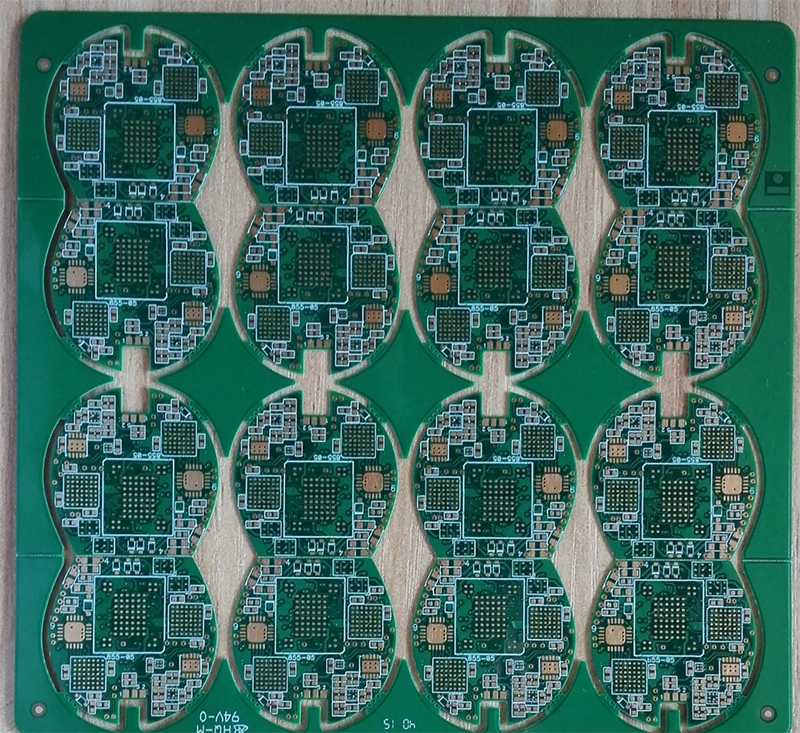Welcome to the World of Multilayer PCB

Keywords: Multilayer PCB
In the ever-evolving landscape of electronic devices, printed circuit boards (PCBs) play a pivotal role as the backbone of electronic systems. Among the various types of PCBs, Multilayer PCBs stand out as a sophisticated and integral component, powering the intricate functionality of modern electronic devices. In this blog, we'll delve into the world of Multilayer PCB, exploring their structure, advantages, applications, and the role they play in advancing technology.
At their core, Multilayer PCBs are a stack of multiple layers of conductive and insulating materials laminated together. Unlike their single or double-layer counterparts, these PCBs feature three or more conductive layers separated by insulating substrates, typically made of materials like FR-4 (Flame Retardant-4), a widely used glass-reinforced epoxy laminate.
Key Components of Multilayer PCBs:
Conductive Layers
The heart of a Multilayer PCB consists of conductive layers, usually made of copper. These layers provide the pathways for electrical signals to travel throughout the board.
Insulating Substrates
Layers of insulating material separate the conductive layers, preventing unintended electrical connections. FR-4 is a common choice for its favorable electrical and mechanical properties.
Vias
Vias are small holes drilled through the layers, connecting the conductive pathways. Through-hole vias penetrate the entire board, while blind and buried vias connect specific layers.
Advantages of Multilayer PCB
Higher Component Density
Multilayer PCBs allow for increased component density, enabling the integration of more electronic components within a smaller footprint. This is crucial for the miniaturization of electronic devices.
Enhanced Signal Integrity
The multiple layers reduce electromagnetic interference (EMI) and signal crosstalk, improving the overall signal integrity. This is particularly important in high-frequency and high-speed applications.
Improved Power Distribution
Multilayer PCBs facilitate efficient power distribution, minimizing voltage drops and ensuring consistent power delivery across the board.
Applications of Multilayer PCBs
Consumer Electronics
Multilayer PCBs are widely used in smartphones, laptops, tablets, and other consumer electronics, where space optimization and performance are critical.
Telecommunications
In the telecommunications industry, Multilayer PCBs support the complex circuitry of communication devices and network infrastructure.
Medical Devices
Medical equipment relies on the precision and reliability provided by Multilayer PCBs, ensuring the accuracy of diagnostic and therapeutic devices.
Automotive Electronics
Advanced automotive systems, including engine control units, navigation systems, and safety features, often utilize Multilayer PCB for their robust performance.
- 1HDI PCB Market Outlook 2025: Future Prospects, Growth Analysis & Innovations
- 2HDI PCB Design Comprehensive Guide: Mastering High Density Interconnect Technology in 2025
- 3Understanding UL 94V-0 Flammability Rating for Printed Circuit Boards (PCBs)
- 4PCB core raw material CCL
- 5IC Substrate | Comprehensive Guide (2021)
- 6Top HDI PCB Manufacturers (2024)
- 7The Impact of Trump's Tariff Policy on Chinese PCB Industry and Countermeasures
- 8How to Make mSAP PCB?
- 9Top 10 IC Substrate Fabricators (2024)
- 10Probe Card PCB is A Significant Aspect of Semiconductor Wafer Test System

- Skype ID: shawnwang2006
- Phone No。: +86-755-23724206
- Email: sales@efpcb.com
- Quick Contact
